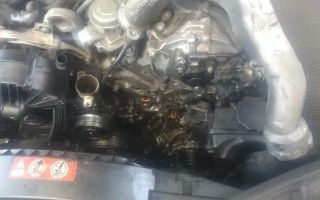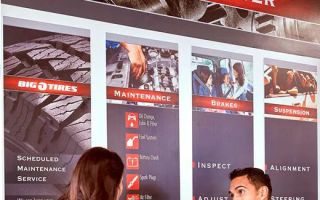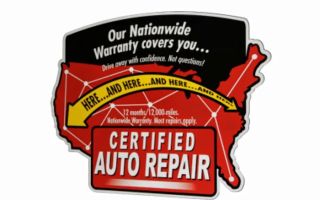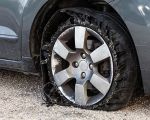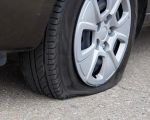Flat Tire Repair and Towing Assistance: A Comprehensive Guide to Getting Back on the Road
There’s nothing more frustrating than being on the road and suddenly realizing that your tire is flat. Whether you're heading to an important meeting or just driving home after a long day, a flat tire can throw a wrench in your plans. However, with the right knowledge and resources, you can handle the situation with minimal stress. In this guide, I’ll walk you through everything you need to know about flat tire repair and towing assistance, ensuring that you can quickly get back on the road and continue your journey.

MR. TIRE INC.
2078 New York Ave, Huntington Station, NY 11746, USA
1. Understanding Flat Tires
A flat tire occurs when the air pressure in your tire is lost or reduced significantly, making the tire unable to function properly. This can happen for a variety of reasons, from punctures to slow leaks. Sometimes, you might not even notice that your tire is flat until you hear a sudden noise or feel a change in the car’s handling. It’s important to understand the common causes of flat tires so that you can take the right precautions to avoid them in the future.

MR. TIRE INC.
2078 New York Ave, Huntington Station, NY 11746, USA
1.1 Common Causes of Flat Tires
Flat tires are caused by a number of factors. The most common include:
- Punctures: Nails, screws, and other sharp objects on the road can puncture your tire, causing air to leak out.
- Wear and Tear: Over time, your tires will naturally wear down. Thin or bald tires are more likely to develop leaks or blowouts.
- Valve Stem Issues: The valve stem is responsible for maintaining air pressure in your tire. If it becomes damaged or faulty, it can lead to a slow leak.
- Extreme Temperatures: Both hot and cold weather can affect tire pressure. In cold weather, air contracts and reduces pressure, while excessive heat can cause tires to expand and potentially burst.
2. How to Deal with a Flat Tire on the Road
Once you’ve realized you have a flat tire, the next step is to safely address the issue. Depending on your location, you might be able to handle it yourself, or you might need to call for towing assistance. Here are the basic steps to follow if you find yourself with a flat tire:
2.1 Assess the Situation
The first thing to do when you notice a flat tire is to stay calm and pull over to a safe location. If you’re driving on a busy highway, try to find an area where you’re away from traffic, such as a shoulder, parking lot, or rest area. Make sure to turn on your hazard lights to alert other drivers of your situation.
2.2 Inspect the Tire
If you feel safe doing so, get out of the vehicle and inspect the tire. Look for visible damage, such as nails or sharp objects lodged in the tire. While you’re inspecting it, check for any other issues that might be present, such as low tire pressure in the other tires, which could indicate a more serious issue with your vehicle.
2.3 Determine Your Next Step
At this point, you’ll need to decide whether you can repair the tire yourself or if you need to call for professional help. If you have a spare tire and the necessary tools, you might be able to replace the flat tire on your own. If you’re not sure how to do this or don’t have the proper tools, calling a towing service is your next best option.
3. How to Change a Flat Tire Yourself
Changing a flat tire is a skill every driver should learn. Although it may seem like a daunting task, with the right equipment and a little know-how, it’s a manageable job. Here’s how you can change a flat tire yourself:
3.1 Gather the Tools
Before starting, make sure you have the following tools in your car:
- A spare tire
- A jack
- A lug wrench
- A wheel chock (optional, but recommended)
3.2 Loosen the Lug Nuts
Place the wheel chock (if you have one) behind the opposite tire to prevent the car from rolling. Then, use the lug wrench to loosen the lug nuts on the flat tire. Be sure to turn them counterclockwise, but don’t remove them entirely yet.
3.3 Lift the Vehicle
Position the jack under the car’s frame (usually near the flat tire) and raise the vehicle until the flat tire is off the ground. Be careful to follow the jack’s instructions, as incorrect placement could cause the car to fall.
3.4 Remove the Flat Tire and Replace with the Spare
Once the car is elevated, finish removing the loosened lug nuts. Then, take off the flat tire and replace it with the spare. Make sure the spare tire is positioned correctly and aligns with the bolts before securing it with the lug nuts.
3.5 Lower the Car and Tighten the Nuts
Once the spare tire is in place, lower the vehicle carefully and tighten the lug nuts in a crisscross pattern. This ensures the tire is securely attached and won’t come loose. Finally, check that the spare tire is properly inflated before hitting the road again.
4. When to Call for Towing Assistance
Sometimes, changing a flat tire yourself isn’t an option. If you don’t have a spare tire, the tools, or the confidence to change it yourself, calling for towing assistance is the best course of action. Towing services are available 24/7 and can help you get your vehicle to a nearby repair shop or back home safely.
4.1 What to Expect from Towing Services
Towing services typically offer roadside assistance, including flat tire repairs or towing your vehicle to a safe location. When you call for help, be prepared to provide your exact location and details about your car and the problem. The tow truck operator will then assess the situation and either repair the tire on-site or transport your vehicle to a nearby repair facility for further assistance.
4.2 The Benefits of Professional Assistance
Using a professional towing service has several advantages, including:
- Experienced technicians who can quickly diagnose and solve the problem
- Access to the proper tools and equipment to repair or replace a tire safely
- Peace of mind knowing that your vehicle is in capable hands
5. Preventing Flat Tires in the Future
While it’s impossible to completely eliminate the risk of a flat tire, there are steps you can take to minimize the chances of experiencing one:
5.1 Regular Tire Maintenance
Regular tire checks are essential for maintaining your vehicle’s health. Inspect your tires for visible damage or wear and tear at least once a month, and make sure they’re properly inflated according to the manufacturer’s guidelines. Rotating your tires regularly also ensures even wear, which can extend their lifespan.
5.2 Avoid Road Hazards
Try to avoid debris, potholes, and other potential hazards on the road that could damage your tires. When driving on rough roads, reduce your speed and stay alert to prevent unnecessary tire damage.
5.3 Invest in Quality Tires
Finally, investing in high-quality tires can go a long way in preventing flats. Premium tires are built to withstand wear and tear and are less prone to damage than cheaper alternatives. Be sure to choose tires that are suitable for the climate and driving conditions in your area.
In conclusion, dealing with a flat tire doesn’t have to be a stressful experience. With the right knowledge, tools, and assistance, you can quickly resolve the issue and get back on your way. Whether you choose to tackle the problem yourself or call for professional help, it’s important to stay calm, prepared, and informed. Safe driving!


